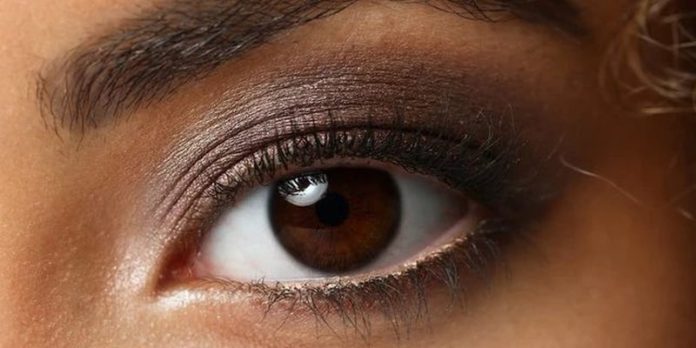Being able to see helps us carry out our daily activities but it’s something many of us can take for granted.
Many people say that eyes are the window to the soul, but experts have revealed that they could also be hiding hidden health issues.

The NHS recommends that most people should get their eyes tested every two years, but shocking research from Specsavers states that 40 per cent of Brits have delayed getting an eye test even when they felt they needed one.
Around 38 per cent of people also said they have never considered that they could suffer from significant sight loss.
You might have to get your eyes tested more often if you have diabetes, are aged 40 and over and have a history of glaucoma and are aged 70 or over.
If you have a child who wears glasses then they will also have to get their sight tested more frequently.
Eye tests are extremely important to keep your eye health in order, and Giles Edmonds, Specsavers clinical services director, explains the signs we can spot and those that can be picked up during an eye test.
Here are the eight conditions that can be found from a routine eye test.
MOST READ IN HEALTH
1. Glaucoma
Glaucoma is a condition that is often symptomless as it develops so gradually.
Mr Edmonds said that it’s because of this that it is referred to as the silent thief of sight.
He explained: “It is one of the leading causes of blindness, however, if it is identified in its early stages it can be successfully managed. Regular eye examinations are key to detecting it – and are so important to those at greater risk of the condition due to their older age or family history. “
Specsavers uses advanced diagnostic equipment called OCT (Optical Coherence Tomography) to examine the eye in more detail and is able to pick up any damage to the optic nerve which is typical of glaucoma.
2. Diabetic retinopathy
In its early stages diabetic retinopathy usually doesn’t pose any noticeable symptoms, so an eye test can pick it up before you do, Mr Edmonds says.
The condition affects small blood vessels in the eye, damaging the retina.
Your optometrist can look for early characteristic changes, such as tiny leaks from these damaged vessels, Mr Edmonds explained.
3. High blood pressure
During an eye test, your optometrist might spot signs of high blood pressure, through observing the eye’s blood vessels to see if they have narrowed or started leaking.
Mr Edmonds explained: “Patients with high blood pressure can develop a condition called hypertensive retinopathy which sees the walls of blood vessels thicken, narrow and restrict blood flow.
“In some cases the retina also becomes swollen and the blood vessels can leak.”
He added that if you’re experiencing red spots on the front of your eyes then this can also be a sign of high blood pressure.
4. High cholesterol
High cholesterol is usually down to too much of a fatty substance called cholesterol in your blood.
The NHS says that it’s mainly caused by eating fatty food and not exercising.
Mr Edmonds said that if you are experiencing persistent floaters then this could be a sign of high cholesterol.
He explained: “Floaters are spots in your vision and usually look like black or grey specs or cobwebs that drift about when you move your eyes.”
Another sign of high cholesterol that can be detected in the eyes is a blue ring.
This ring will usually appear around the iris as you age.
“This is caused by cholesterol deposits in the eye. They are more common in those aged 60 and above and aren’t usually something to worry about.
“However, if these develop in the under 40s, there may be a greater risk of developing heart disease”, he said.
5. Jaundice
If you’re experiencing a yellowing of the eyes then you might have jaundice.
Mr Edmonds explains: “The condition occurs when haemoglobin (part of the blood which carries oxygen) breaks down into bilirubin, which isn’t then cleared from the body.
“It is meant to move from the liver to the bile ducts, but if this doesn’t happen yellowing of the skin – and the eyes – can occur and could signify there is a problem with the liver, gallbladder or pancreas.”
6. Stroke
If you think you are having a stroke then you should call 999 immediately and get help.
Mr Edmonds explained that the sudden onset of blurry vision could be down to a stroke.
He added that this could particularly be if the blurred vision is combined with some of the other key signs such as slurred speech and dropping of the face.
“Blurry vision could also indicate other eye conditions such as cataract or age-related macular degeneration too”, he said.
7. Arthritis
As well as causing inflammation of the joints, some autoimmune diseases, such as rheumatoid arthritis, can also cause inflammation in the eyes, Mr Edmonds says.
“This inflammation usually leads to dry eye but occasionally it can cause more serious conditions like inflammation of the iris”, he added.
8. Tumours
While an eye test can look for any cancers of the eye such as melanomas, it will sometimes reveal signs of possible brain tumours, Mr Edmonds says.
He explained: “Swelling in the optic nerves can be visible during an eye test and can sometimes indicate that a brain tumour is present.”

